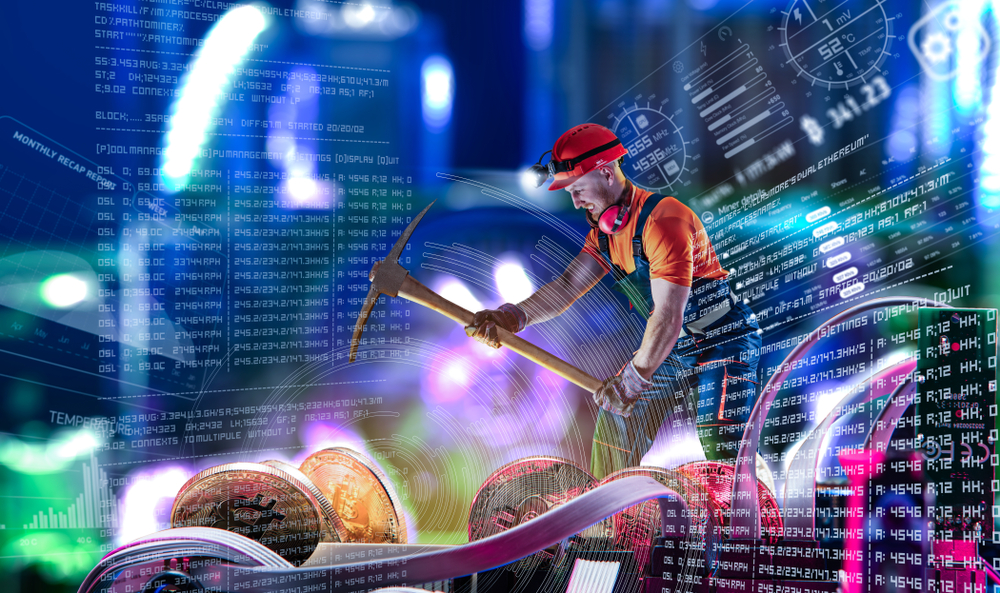If you have been in crypto for a while, you may have heard the phrase “Bitcoin mining.” But what does it mean? Simply put, it is the process of adding blocks of transactions to a blockchain for verification. It also refers to the process of creating new BTC. Those who engage in mining are known as miners and are incentivized to participate.
Bitcoin mining is not cheap as it requires interested parties to set up expensive equipment. Nonetheless, this factor has not prevented investors from venturing into the business. Being a decentralized crypto asset, Bitcoin allows everyone in the world to participate in mining.
Why is Bitcoin Mining Necessary?
As mentioned before, mining involves auditing and verifying all transactions on the Bitcoin blockchain to prevent what’s known as the “double spending” problem. Double spending happens when a BTC user attempts to spend a single coin twice. Therefore, the miners’ job is to ensure that no transaction is duplicated.
The Bitcoin Mining Process
Bitcoin employs the proof of work consensus mechanism, which requires mining. Here is how mining works:
- All miners’ computers are called nodes. They collect and organize individual transactions into blocks.
- The nodes then compete with each other to solve a tough cryptographic problem in order to be first in validating a new block.
- The node that validates the block first broadcasts its success throughout the Bitcoin blockchain.
- After doing so, other nodes will then confirm the correctness of the solution before the block is included in the network.
- The miner’s node that solved the problem received rewards in the form of BTC.
It is worth highlighting that every time mining happens, it becomes more difficult to solve the cryptographic problem. This means a miner needs a higher hash rate to boost their chances of receiving block rewards. That makes extra computing power necessary.
So what do Bitcoin miners use to carry out their activities? Initially, they used computer CPUs (central processing units) but later discovered that GPUs (graphics processing units) were better. Now, there are companies that manufacture dedicated mining hardware called Application-Specific Integrated Circuit or ASIC. Although expensive, ASIC machines are more effective than GPUs and CPUs.
Miners play a significant role in protecting the Bitcoin blockchain from attacks. Here is how: Any attacker who wishes to reverse Bitcoin transactions in the network would need about 50% of the entire blockchain’s computing power. That makes the attack difficult to execute as the attacker must possess more mining equipment than any other miner.
Bitcoin Mining Crackdown in China
Today, you do not need to mine Bitcoin individually because we now have “mining pools” where a group of miners combine their computing power to increase their chance of earning rewards.
Up until March 2021, most of these pools were in China. But that changed the following month when the Chinese government said Bitcoin mining was a financial risk that needed to be monitored. The announcement fueled the start of a crypto mining crackdown across the entire country. The government would later launch its Central Bank Digital Currency (CBDC), the digital yuan, to rival Bitcoin.
Some Chinese provincial governments banned mining entirely. They include Qinghai, Sichuan, Yunnan, and Inner Mongolia. This caused Chinese miners to relocate, with some moving to Kazakhstan while others to the United States. Today, the US is the world’s biggest host for Bitcoin miners.
Bitcoin Mining Criticism
Mining has been criticized severally for consuming high energy. Environmentalists also claim that the activity pollutes the environment by releasing a considerable carbon footprint. Due to increased criticism of the proof-of-work consensus mechanism, some crypto assets have switched to another system called proof-of-stake.
The proof-of-stake blockchains do not require miners. Instead, they use validators who stake a particular amount of tokens on the network to validate transactions. One of the cryptocurrencies that have ditched proof-of-work for proof-of-stake is Ethereum. The second-largest crypto asset made the transition in September 2022.
Nonetheless, Bitcoin continues to stick with the proven proof-of-work model introduced by its founder Satoshi Nakamoto 14 years ago.
